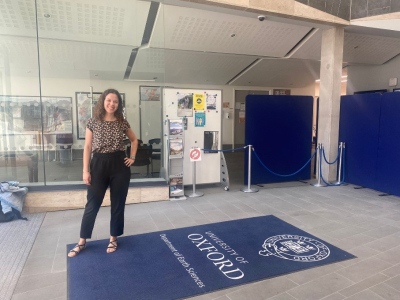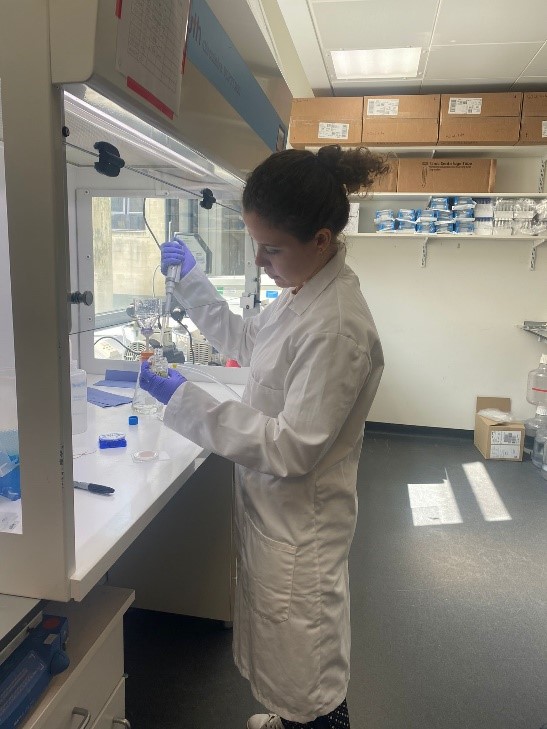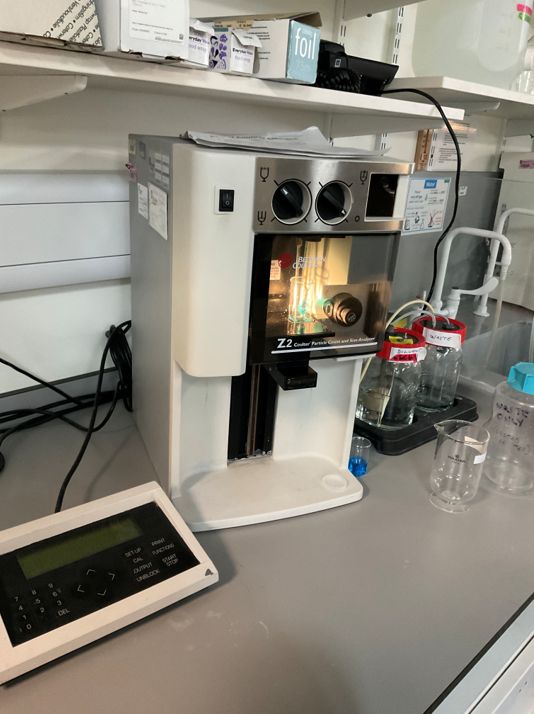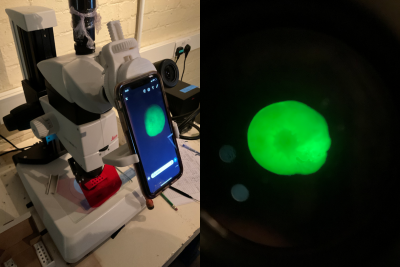- Graduate School GLOMAR
- PhD student reports
- Research Placements
- Débora Raposo
Débora Raposo
Report of GLOMAR PhD student Débora Raposo about her research placement at the University of Oxford, UK in the Department of Earth Sciences from 11 to 22 July 2022
My PhD project was well underway when I began my research stay; I had all the necessary samples and had finished the necessary lab work. Therefore, the purpose of my research stay was to talk about various methodologies and analyses that I may use to my advantage and put to use in projects that could come after my PhD project. My goal was to get as much knowledge as I could by working with Prof. Rickaby's team at the Department of Earth Sciences at the University of Oxford.
In my PhD study, I evaluate the conditions that favour successful biological invasions in the Mediterranean Sea using the invasive benthic foraminifera species Amphistegina lobifera and their diatom symbionts as a model system. My main objective is to comprehend whether the invasive foraminifera (host) has features that facilitate invasions and what function its microbiome (symbionts) plays in the invasion process. I carry out physiological tests to see if the host and symbionts can survive in the colder Mediterranean climate in terms of growth, photosynthetic activity, and mortality. As part of my research, I also do genetic analysis to see if the host exhibits population structure (genetic divergence) across its invasive range and if it has the capacity to take on novel symbionts from its environment. For the later I used metabarcoding analysis to examine the microbiome composition of A. lobifera and environmental samples (sediment and seawater environmental DNA).
The group of Prof. Rickaby works on related topics to my current working group in MARUM (marine biology and marine biogeochemistry), but from different perspectives. Prof. Rickaby applies a broad multidisciplinary approach to study diverse aspects of calcifying organisms (e.g. coccolithophore, planktic and benthic foraminifera) and their interaction with the environment such as their response and feedback to climate change (i.e., ocean acidification), evolution of the algal enzyme RuBisCo, and physiological controls on carbon isotopes. Therefore, some aspects of the research carried by her working group are new to me, while others are familiar, which gives a perfect balance for potential future collaborations.
In these two weeks of my research stay I was introduced to many different analyses that I have never done before, which were:
- Symbionts isolation from foraminifera and preparation of samples for Scanning Electron Microscope (SEM) images - the group showed me their successful protocol to isolate symbionts of many foraminifera species and how to keep them cultured on the long term. Finally, I also had a chance to learn how to prepare the samples for SEM images.
- Working with phytoplankton cultures
- Counting cells (of coccolithophores cultures) with coulter counter - a key approach to track growth rates of phytoplankton cultures. Tracking the cell numbers and identifying when they are in the exponential phase of reproduction (exponential growth in population) is fundamental for general maintenance of such cultures as well as execution of long-term experiments.
- Measuring physiological response of coccolithophores with oxygen measurement (Oxy-Lab, Hansatech Instruments Ltd) - interesting tool that quantify the rate of photosynthesis and respiration on liquid-phase samples.
- Measuring physiological response of coccolithophores with photosynthesis measurement (FIRe fluorometer system) - efficient tool to measure variable chlorophyll fluorescence in phytoplankton organisms. It is an alternative to Pulse-Amplitude-Modulation (PAM) Fluorometry analysis that I use in my own research.
- Using fluorescence microscope to observe foraminifera chambers developed during experiment - very useful technique to support calcification experiments on foraminifera. For this analysis the foraminifera must stay a few days prior the experiment in a media stained with calcein – a fluorescent marker. The chamber grown in this media works as a tag to observe which chambers grew after the beginning of the experiment.
Parallel with the lab work, Dr. Titelboim and I engaged in learning processing routines of whole-transcriptome shotgun sequencing data through an online training format available to her. These analyses piqued my interest in particular because I plan to use such approach in post-doctoral work in the future. We learned a basic pipeline, which includes the following steps: quality checking, alignment of Illumina data to a reference genome, counting reads, differential gene expression, and gene ontology enrichment analysis. It was a great chance to comprehend how these analyses function and to gain the self-assurance necessary to operate on them.
I also got to talk to Dr. Dedman about proteomics data analysis. He provided me a brief rundown of the proteomics analysis pipeline, explaining how he uses it to his research and what are its advantages and limits. I find this technique to be especially intriguing because it complements transcriptomes and physiological experiments. Therefore, another potential technique to investigate the interactions between hosts and symbionts in my future research projects.
Overall, I'm incredibly glad I took this break from working on my own project to collaborate with another team. I had interesting discussions regarding potential post-docs in the future, and I was strongly encouraged to submit proposals to get funding to begin conducting my own research. I found this experience to be quite motivating, and I am eager to consider the next phase of my academic career. I am undoubtedly more confidence to work in a new group and a new atmosphere wherever it may be!
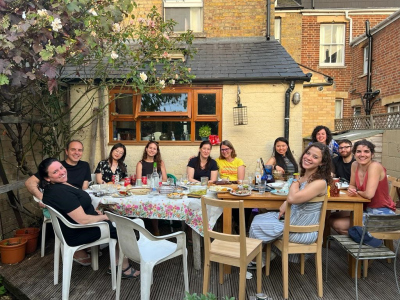
I am grateful to Prof. Rickaby’s team for their hospitality during my time in there, but especially Dr. Danna Titelboim for all her assistance during my research stay. I would also like to thank the BMBF for funding this work through the ForaInva project, and GLOMAR for providing the financial support for this research stay.



